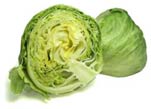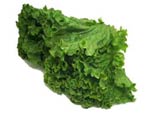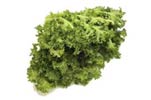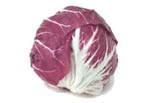Home | FOOD ARTICLES | Food Trivia | Today_in_Food_History | Food_History_Timeline | Recipes | Cooking_Tips | Food_Videos | Food_Quotes | Who’s_Who | Culinary_Schools_&_Tours | Food_Trivia_Quizzes | Food_Poems | Free_Magazines | Food_Festivals_and_Events
Food Articles, News & Features Section
FREE Magazines
and other Publications
Free Professional and Technical Research, White Papers, Case Studies, Magazines, and eBooks
LETTUCE
See also: Romaine; Bibb Lettuce; Lettuce Trivia; Lettuce Tips;
Lettuce Quotes
This vegetable is widely popular throughout the world and is readily available in supermarkets year round with hundreds of varieties to choose from. Iceberg used to dominate the selections but other varieties are now moving to the forefront. Most domestic varieties are from California and imported lettuce typically arrives from Europe.
HISTORY
The lettuce that we see today, actually started out as a weed around the Mediterranean basin. Served in dishes for more than 4500 years, lettuce has certainly made its mark in history with tomb painting in Egypt and identification of different types of lettuces by various Greek scholars. Christopher Columbus introduced lettuce to the new world and from there, lettuce in the United States began cultivating.
BENEFITS
Most dark greens are good sources of Vitamin C, beta-carotene, iron, calcium, folate, and dietary fiber. The rule of thumb is, usually, the darker the greens, the more nutritious the leaf.
TYPES
There are four main types of lettuce and under each type there are different varieties. Butterhead (includes Boston and Bibb)
Butterhead (includes Boston and Bibb)
Loose heads, grassy green leaves, butter texture, mild flavor. Good examples are Boston lettuce, which looks like a blooming rose, and Bibb lettuce that has a small cup-shaped appearance.
 Crisphead
Crisphead
The least nutritious of the salad greens, this pale green lettuce takes on the cabbage appearance with its leaves more tightly packed together. An example is the Iceberg lettuce. It’s known for the crispy texture and very mild flavor.
 Looseleaf
Looseleaf
This variety doesn’t grow to form lettuce heads, but is instead the leaves are joined at the stem. Good examples of this variety include: oak leaf, red leaf, and green leaf.
 Romaine or Cos
Romaine or Cos
This lettuce has gained tremendous popularity in the past decade as the key ingredient in Caesar salads. It has a loaf-like shape with darker outer leaves. It’s strong taste and crispy texture has been favored by those who like Iceberg lettuce.
VARIETIES
 Arugula (rocket or roquette)
Arugula (rocket or roquette)
This variety used to be hard find, but can now be found at many supermarkets. This variety is characterized by small, flat leaves with long stems, quite similar looking to dandelion leaves, and a peppery taste. This lettuce is usually paired with other varieties to balance out the taste.  Belgian endive or French endive
Belgian endive or French endive
This leaf is a family member of chicory and escarole, with tightly packed leaves and bullet-like shape. Creamy yellow or white in color, slightly bitter in taste, but crisp in texture.
 Chicory or curly endive
Chicory or curly endive
This leaf is slightly bitter, with darker outer leaves and paler or even yellow leaves towards the center. The leaves itself are ragged edged on long thin stems.
 Escarole
Escarole
Another member of the chicory family, this lettuce has broad wavy leaves and a milder taste than chicory.
 Mâche or lamb’s lettuce or field salad
Mâche or lamb’s lettuce or field salad
With a fingerlike shape, velvety feel, and mild taste, this variety is usually sold bunched together with its roots, at an expensive price due to its delicate and perishable nature.
 Raddicchio
Raddicchio
This variety looks like red cabbage, but it’s actually a chicory family member. This leaf is typically used for an accent in salads because of its steep cost as most radicchio lettuce arrives from Italy.
SELECTION AND STORAGE
Lettuce is a delicate vegetable and great care should be taken when selecting and storing. Most lettuce is showcased on ice or in refrigeration. When selecting your leaves, be sure that they are fresh and crisp, with no signs of wilting, slim, or dark spots or edges. Remember when selecting your lettuce that the darker outer leaves are the most nutritious.
Lettuce tends to keep well in plastic bags in the crisper section of the refrigerator. Iceberg lettuce keeps the best, lasting around two weeks, while Romaine, ten days, and butterheads types and endives lasts approximately four days. The very delicate greens don’t last very long, so it’s best to buy only as much as you need at one time and use immediately.
Salad greens should not be stored near fruits that produce ethylene gases (like apples) as this will increase brown spots on the lettuce leaves and increase spoilage. Greens that are bought in bunches should be checked for insects. Those leaves that have roots should be placed in a glass of water with a bag over the leaves and then placed in the refrigerator.
PREPARATION
Generally lettuce is eaten raw, so consider removing any browned, slimy, or wilted leaves. For all lettuce types, you should thoroughly wash and ‘dry’ the leaves to remove any dirt or lingering insects. If you eat lettuce often, it’s wise to invest in a salad spinner. Simply rinse the leaves and place in the spinner to remove the excess water.
In addition to their most common use in salads, you can also braise, steam, sauté and even grill certain lettuce varieties to create a wonderful and different taste treat. Try halving a head of radicchio or romaine lengthwise, and brush on some extra virgin olive oil, and grill until they soften and just begin to brown-absolutely delicious.
Make Lettuce Part of Your 5 A Day Plan 
- Here are some easy ways to include lettuce into your meals:
- Add lettuce to ALL your sandwiches.
- Try a different mix of lettuce like European or baby greens for a tasty twist to your usual salad.
- Grilling tonight? Why not try spritzing some extra virgin olive oil onto romaine or radicchio leaves and grill until slightly soft — these make an excellent hors d'oeuvre.
- Get creative, include any variety of lettuce into meals as plate liners you can eat!
RELATED ARTICLES
Please feel free to link to any pages of FoodReference.com from your website.
For permission to use any of this content please E-mail: james@foodreference.com
All contents are copyright © 1990 - 2025 James T. Ehler and www.FoodReference.com unless otherwise noted. All rights reserved.
You may copy and use portions of this website for non-commercial, personal use only.
Any other use of these materials without prior written authorization is not very nice and violates the copyright.
Please take the time to request permission.

